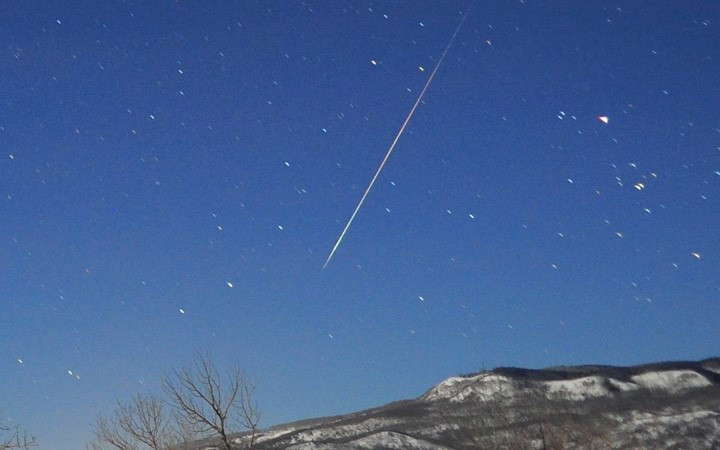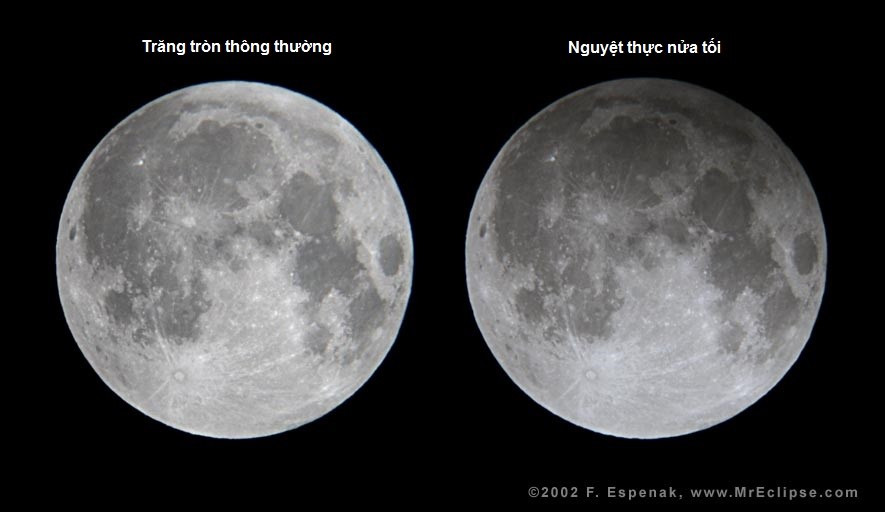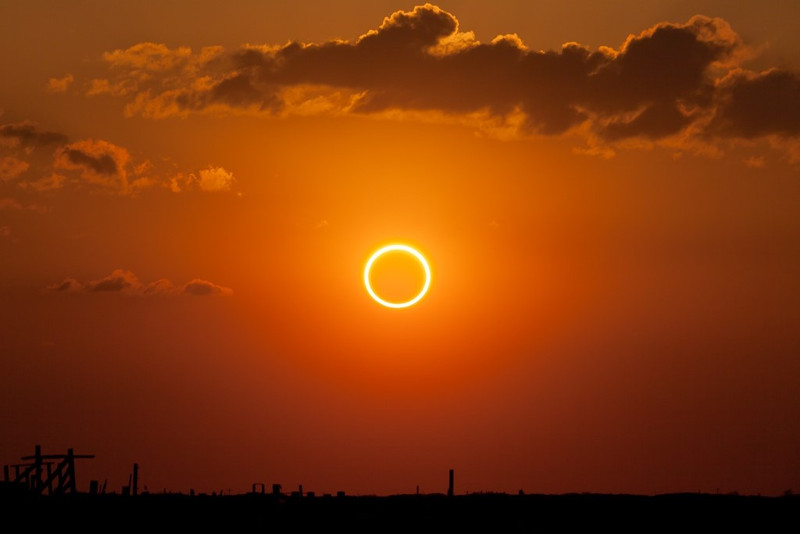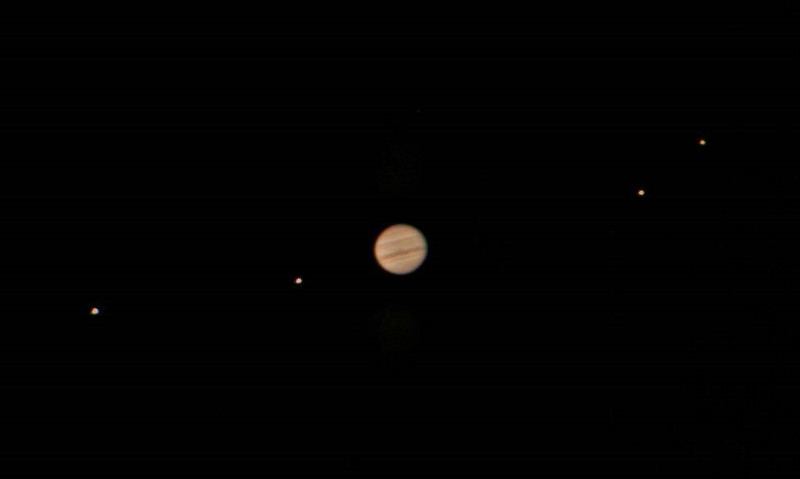The world welcomes the sun's ring, the moon in the middle of the year 2017
In 2017, the world will have the opportunity to observe the total solar eclipse, annular eclipse, half-moon eclipse, partial eclipse and 4 large meteor showers.

Quadrantid meteor shower (January 3 - 4): The first large meteor shower of the year, Quadrantid, will peak on the night of January 3 and January 4, with a density of up to 40 tracks / hour.The Quadrantid meteor shower is made up of the dust of an extinct comet named 2003 EH1, discovered in 2003. The sky is nearly dark these days will create good conditions to observe.(Photo: Jimmy Westlake).

Moon is half dark (February 10-11) : This phenomenon is very difficult to observe with the naked eye and is often confused with the normal full moon.The half-moon eclipse occurs when the Sun, Earth and Moon lie in line with the Earth in the middle, blocking part of the sunlight from reaching the Moon.Part of the Moon hidden behind the Earth's shadow, also known as the half-dark area, will become dim.Meanwhile, the rest still shines like the usual full moon.The midnight moon of 2017 can be observed from Europe, most of Asia, Africa and much of North America.(Photo: MrEclipse).

Solar eclipse (February 26): The phenomenon occurs when the Moon is far away from Earth to the level of obscurity almost completely the Sun, leaving only a ring of ambient light. The "fire ring" of the solar eclipse is recommended to be observed on a narrow belt in southern and western Africa, most of the South American, Pacific, Atlantic, Indian and Antarctic regions.The surrounding areas will observe a partial eclipse.(Photo: NewsBytes).

Jupiter reaches the brightest (April 7): Jupiter will approach the Earth and be illuminated by the Sun on April 7.This giant planet will reach the biggest brightness of the year and can be seen throughout the night in the sky.This is the best time to observe and photograph Jupiter and its moons.(Photo: Jan Sanberg).

Eta Aquarid meteor shower (May 5-6): The best time to watch the Eta Aquarid meteor shower is in the early morning, just before dawn on May 5 and 6.At the peak, the meteor density can be up to 60 tracks / hour.Eta Aquarid meteor shower is made up of Halley comet dust particles known from ancient times.The moon in early May will make the meteor this year faint.However, if patient, the observer may see some bright star streaks, especially after midnight.The meteor will radiate from the constellation Aquarius but can also appear anywhere in the sky.(Photo: FreeRoaming).

Saturn reaches its brightest (June 15): Saturn will be in direct position against Earth on June 15, ie Saturn, Earth and Sun will lie in line and the Earth lies. between.Saturn's very close distance from Earth will make it shine in the sky.Saturn's belt and some of the brightest moons around it can be observed with medium or large telescopes.(Graphic: Museum Victoria).

Partial eclipse (August 7-8): This phenomenon occurs when the Moon passes through the dark half of the Earth and only a portion of the Moon passes through the complete darkness. Partial eclipses this year will be observed from most regions in southern and eastern Asia, Europe, Africa and Australia. According to researcher Dang Vu Tuan Son, chairman of the Vietnam Young Astronomical Society, this will be the most remarkable astronomical phenomenon this year in Vietnam. This event can be watched completely anywhere in our country. "The real moon is not too rare, on average, over 1 to 2 years we will observe again. Even so, if we count in the limit of 1 year, it is still quite interesting phenomenon," he said. Son said.(Photo: Getty).

Perseid meteor shower (August 12-13): This is one of the most beautiful meteor showers of the year, with a density of up to 60 tracks / hour when it reaches its peak.This meteor shower was made up of the comet Swift-Tuttle, discovered in 1862. Because the Perseid meteor shower created a lot of bright star streaks, its performance would not be much affected by the moonlight.The meteor streaks will radiate from the constellation Perseus and can appear from anywhere in the sky.(Photo: NASA).

Total solar eclipse (August 21): This solar eclipse can be observed on the region stretching across the United States, from the East Coast to the West Bank.This will be the first total solar eclipse in the US inland since 1979. (Photo: NASA).

Venus and Jupiter meet (November 13): The spectacular combination of Venus and Jupiter can be observed in the night sky on November 13.The two planets will shine very close together and are only about 0.3 degrees apart.The couple will appear in the eastern sky just before the Sun rises.(Photo: ESO).

Super Moon (December 3 - 4) : The Moon at the closest point to Earth should be bigger and brighter than usual when viewed from the Earth.This is also the only super moon in 2017. (Photo: TamarValley Cottages).

Meteor shower Geminids (December 13-14) : Considered to be the most beautiful meteor shower of the year, meteor shower Geminids can create 120 colorful meteor streaks every hour when it reaches its peak.These star streaks are made up of the 3200 Phaethon asteroid, discovered in 1982. The crescent moon will not affect the Geminids meteor shower this year.The sky will still be dark enough for this beautiful performance.The meteor will spread out from the constellation Gemini and also appear anywhere in the sky.(Photo: Kenneth Brandon).
- The world welcomes the last super moon of the year
- The nation welcomes the earliest and latest year 2017 in the world
- Found a 500-year-old neck ring in an abandoned land
- Video: 3 suns together in Russia
- Let's admire the image of the last super moon of the year
- Comets create brilliant fireworks in New Year's Eve sky
- 1,600-year-old amethyst gold ring
- Seeing the 'fire ring' around the Sun
- Hypothesis of the fate of the Earth if the universe exists 2 Sun.
- Discovered a strange planet with 3 Suns in the summer that lasted up to 300 years
- Giant ring of fire in the sky
- For the first time, the planet has 4 suns
 Van Allen's belt and evidence that the Apollo 11 mission to the Moon was myth
Van Allen's belt and evidence that the Apollo 11 mission to the Moon was myth The levels of civilization in the universe (Kardashev scale)
The levels of civilization in the universe (Kardashev scale) Today Mars, the sun and the Earth are aligned
Today Mars, the sun and the Earth are aligned The Amazon owner announced a secret plan to build a space base for thousands of people
The Amazon owner announced a secret plan to build a space base for thousands of people